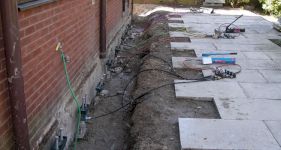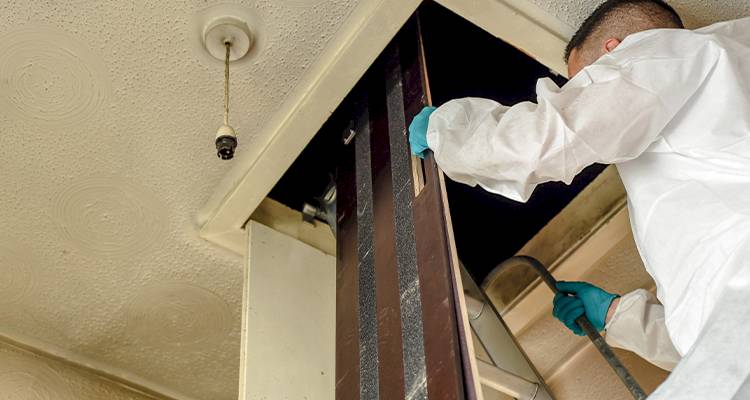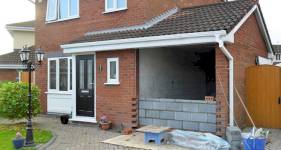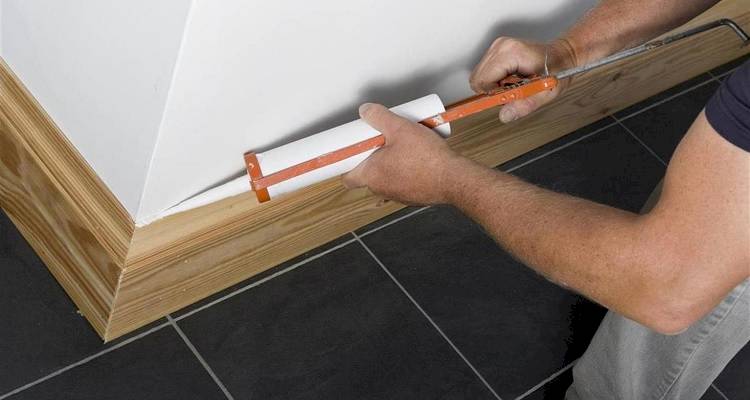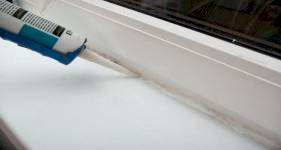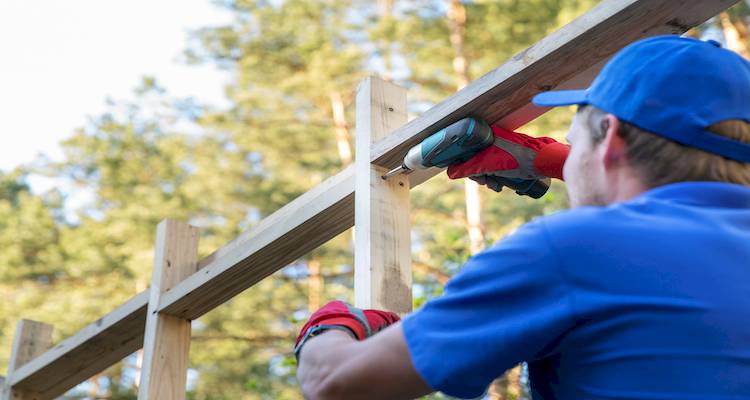RSJ Installation Cost
- The average RSJ cost is around £1,400 in the UK.
- The job will usually take between 1 to 2 days.
- A breakdown of RSJ costs in 2026 by type and size.
- How long it takes to install an RSJ and what impacts prices.
- What size RSJ is best suited for your project.
- How to find a local builder to install an RSJ using MyJobQuote.
Wondering how much a RSJ beam costs to get installed?
For most homeowners in the UK, RSJ installation costs will be between £1,000 and £1,800. However, prices you're quoted will vary depending on what's required in your case.
That's why we've made this guide — to help you narrow down what a steel beam costs in your case.
But because costs can vary so much, getting a few quotes from local builders is the best way to find out what you'd pay in your case.
You don't need to be ready to start work to explore your options. Quotes you get through MyJobQuote are fast and free, with no obligation to go ahead.
You'll find our full guide to RSJ costs below.
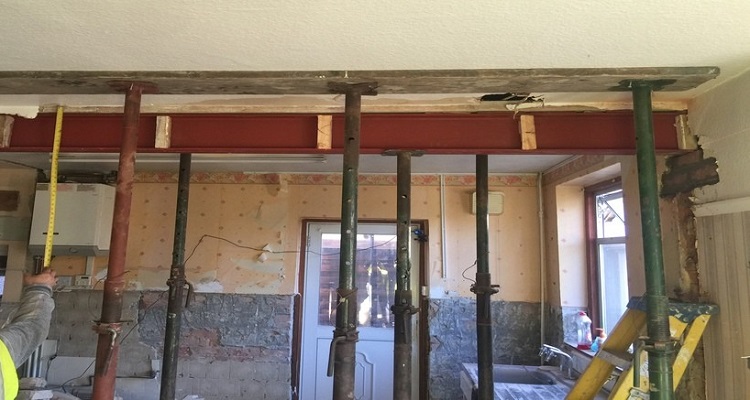
£1,400
Table of Contents
- How Much Does an RSJ Installation Cost?
- Labour Cost of RSJ Installation & Timescales
- Supply Cost of an RSJ
- Additional RSJ Costs
- Factors That Impact RSJ Costs
- What Are the Standard Sizes Of RSJs?
- What are the Benefits of an RSJ?
- Different Types of RSJ
- Do I Need an RSJ?
- Building Regulations When Installing an RSJ
- Can I Install an RSJ Myself?
- Cost of RSJ Removal
- Checklist: Hiring an RSJ Installer in the UK
How Much Does an RSJ Installation Cost?
First of all, what does RSJ stand for?
An RSJ, or Rolled Steel Joist, is a steel beam, steel girder, or steel lintel.
There are several types of RSJ, but the most common one by far is the "I" beam joists used to support structures. They're most frequently used when homeowners get an extension or knock down a wall during a home renovation.
Installing an RSJ may be possible for DIY enthusiasts, but the calculations required to work out the support required are difficult. Building regulations require joists to be sitting on a wall that will bear the load of any structure sitting on top of the joist.
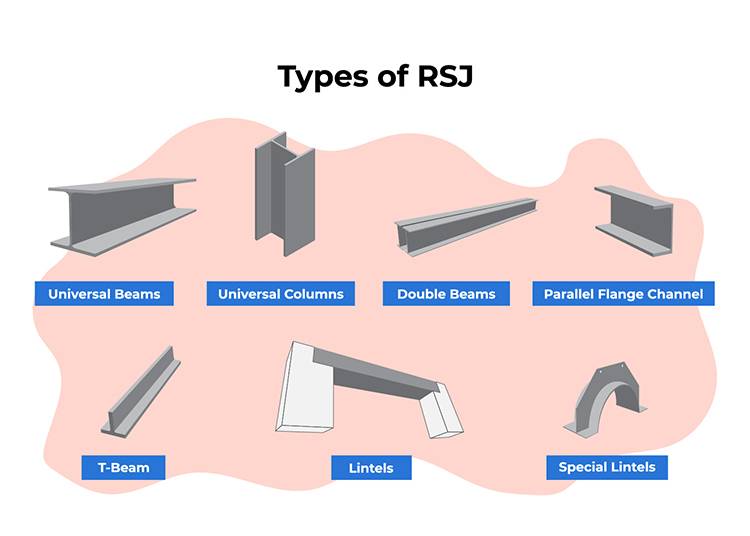
It has to be sitting on a strong concrete block to distribute the weight uniformly. Any quote to install an RSJ should include calculations done by a structural engineer.
Steel beam costs per metre (including supply and labour) are between £225 and £570. Excluding RSJ installation costs, the cost per metre would drop to around £50 to £100 per metre.
The cost of installing an RSJ will vary greatly depending on the size of the beam, your particular property, whether utilities need to be relocated, and where you are based in the UK. You'll need to budget for the cost of hiring a structural engineer, plastering, skip hire, the cost for building control approval, materials, and labour for the installation.
How much would it cost to install an RSJ to an external load-bearing wall between a dining room and an extension?
RSJ Installation Prices
The table below shows how much a 1 metre, 2 metre, and 3 metre steel beam costs to get installed by a builder in 2026.
A smaller RSJ will typically take about 1 day to install, but it could take up to 2 days if you need to put in a large beam.
| RSJ Size | Supply Cost | Labour Cost | Total Cost |
|---|---|---|---|
| 1m (single doorway) | £50 – £120 | £400 - £450 | £450 - £570 |
| 2m (double doorway) | £100 - £240 | £550 - £600 | £650 - £840 |
| 4m (open-plan) | £200 - £400 | £700 - £800 | £900 - £1,280 |
Note: These estimates only include the cost of the steel beam and the labour cost to install it. If you're still planning this project, you'll need to also budget for structural engineer calculations.
Labour Cost of RSJ Installation & Timescales
Before getting a quote for an RSJ installation, you need to remember that part of installing an RSJ is the expert calculations required from a structural engineer. Plus, you then need a skilled builder to carry out the work properly to the engineer’s calculations.
Note also that this type of work will always create a huge mess, no matter how careful the builders are. This mess will require a lot of cleaning and usually also some re-plastering and re-decorating.
Most of the work can be carried out by an experienced local builder, but you will also need a structural engineer and possibly an electrician and a plumber, depending on the location of the RSJ. Most people handle the final decorating work themselves, but some will also need the services of a painter and decorator.
The labour costs for installing an RSJ depend on the size of the job at hand. A single doorway 1m RSJ costs around £400 to £450 for labour, a double doorway 2m RSJ costs around £550 to £600 for labour, and a large open plan 4m RSJ cost around £700 to £800 for labour.
I want to have an RSJ replaced. Who should I hire to remove the old RSJ, or should the installation company take care of this for me?
Supply Cost of an RSJ
If you are looking for the cost of an RSJ alone, you may want to know how much a steel beam RSJ costs per metre. An RSJ costs approximately £50 to £100 per metre.
You can purchase an RSJ as supply only, however, it is not recommended that you take on the job of installing the RSJ by yourself. The calculations involved with installing an RSJ are complex, and only a professional can provide the appropriate calculations on how much weight can be distributed across your RSJ.
The table below indicates the supply-only costs for different elements you may need for an RSJ job:
| Item | Estimated Cost |
|---|---|
| Universal Beams | £50 – £120 per metre |
| Universal Columns | £50 – £120 per metre |
| Double Beams | £50 – £100 per metre |
| Parallel Flange Channel | £30 – £100 per metre |
| T-Beam | £8 – £20 per metre |
| Lintels | £16 – £22 per metre |
| Special Lintels | £40 – £60 per metre |
Additional RSJ Costs
There are a number of additional costs that may come up during an RSJ installation job.
The main additional costs that may pop up with this type of work are listed below:
- Structural Engineer — Hiring a structural engineer is an important step that should be taken before you hire a builder to install an RSJ as they will carry out the RSJ calculations for safe installation. The cost of structural engineers per day is around £450 in the UK, but the exact price will be determined by how long you need their services for.
- Wall Demolition — You may need a wall or two demolished in the process of your project to open up an area, or to start off an extension or loft conversion project. The average cost of demolishing a wall is typically £1,200 to £1,750, but varies depending on the scale of the demolition - if the wall in question is load-bearing, your costs will be higher, as detailed below.
- Removing a Load-Bearing Wall — Load-bearing walls require a structural engineer's calculations to ensure there is support in place once the wall has been taken away. The cost of removing a load-bearing wall can start at £3,000+ depending on the size of the area you're removing and the complexity of the job.
- Removing a Partition Wall — Similar to simply demolishing a wall, a partition wall is a room separator that doesn't carry any structural weight. The cost of removing a partition wall is lower as a result, being around £1,750.
- Re-Plastering — Fresh walls need some TLC, and re-plastering a small room will cost around £390 to £510, taking no more than a day.
- Re-Decorating — Once your walls have been re-plastered, you'll want to add some personality back into them. Painting a small room will cost around £150 to £200 per day, but if you'd prefer having wallpaper installed, this will cost £300.
- Skip Hire — You'll need something to take care of the rubble and waste that comes with home renovations. A one-week skip hire will cost you around £200 to £250.
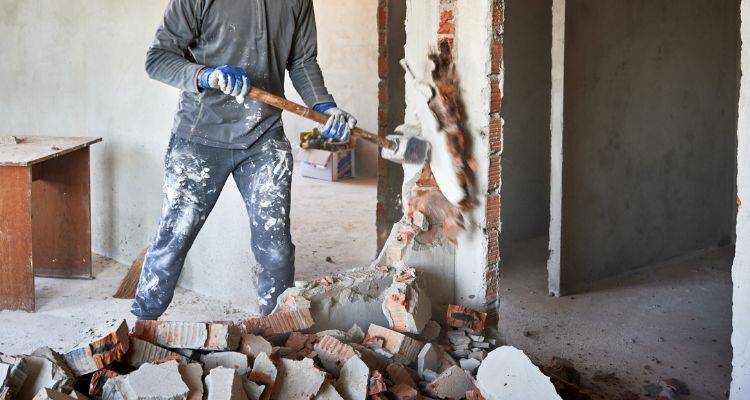
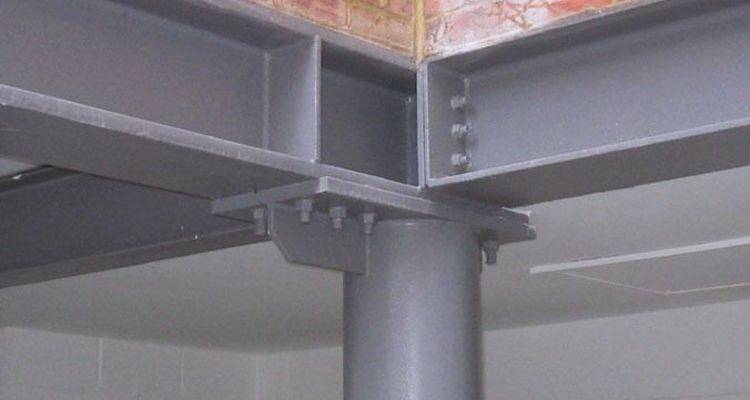
Factors That Impact RSJ Costs
There are several factors that may affect the cost of your RSJ installation cost, some of which are outlined below. Although you may wish to check with your contractor to see if any additional preparation work is required prior to delivery.
- Size of the RSJ: Larger RSJ beams increase the total price of the job. RSJ costs are around £50 to £100 per metre, so longer beams significantly raise the overall cost.
- Type of RSJ/steel grade: Heavier or higher-grade steel can become more expensive. Some jobs require structural steel with a higher load-bearing capacity, which increases material costs.
- Site Preparation: Whether it's clearing the area of debris or additional structural work such as knocking down walls, this can significantly impact the cost if not completed in advance.
- Location of your home: Installation costs vary by region. For example, London may cost as much as £200 to £300 more than the north of the UK, this is largely due to higher overheads.
- Ease of access: Difficult-to-access properties increase labour time and complexity, which raises overall costs. This can include aspects such as on-street parking, as well as physically installing RSJs into the property.
- Equipment hire: In some cases, additional equipment such as cranes, acrow props, or lifting gear are needed, which can add £50 to £150 per day in hire costs.
What Are the Standard Sizes Of RSJs?
Below is a list of common RSJ beam sizes. These particular sizes are commonly used in domestic properties:
| Depth (mm) | Width (mm) | Weight (kg/m) |
|---|---|---|
| 152.4 | 88.7 | 16 |
| 177.8 | 101.2 | 19 |
| 203.2 | 101.8 | 23.1 |
| 203.2 | 133.2 | 25.1 |
| 206.8 | 133.9 | 30 |
| 251.4 | 146.1 | 31.1 |
| 256 | 146.4 | 37 |
| 259.6 | 147.3 | 43 |
What are the Benefits of an RSJ?
There are a number of benefits to installing an RSJ. The main advantages of installing an RSJ are listed below:
Eco-Friendly
Steel RSJs are a sustainable choice for construction due to their high recyclability. Steel can be recycled multiple times without losing strength or quality, significantly reducing construction waste compared to some other materials.
By using recycled steel and designing long-standing structures can help minimize the environmental impact of steel production. Additionally, because steel is durable and long-lasting, it reduces the need for frequent replacements, which further supports sustainable construction practices.
Strength
Steel is incredibly strong. It is capable of bearing more weight and stress without compromise than a beam made out of alternative materials, such as concrete or wood.
Modern buildings are often constructed with steel frameworks because they are incredibly strong and able to withstand extreme weather conditions, such as earthquakes and hurricanes.
Durability
RSJ steel beams are incredibly durable. Wood and concrete beams are nowhere near as tough in composition as steel. Steel beams are also resistant to fire (although additional fireproofing is recommended), they don’t require any chemical treatments, and are also resistant to termite damage.
Longevity
Steel can last for an incredibly long time, especially in comparison to other materials. The load-bearing design of RSJ steel beams means that they are basically indestructible to constant weight.
Different Types of RSJ
There is a wide range of different RSJ beams available. The following list explains a little about the different types and the pros and cons of each type.
Universal Beams
Universal beams are good for many different types of construction. They are safe and durable and come at a low cost.
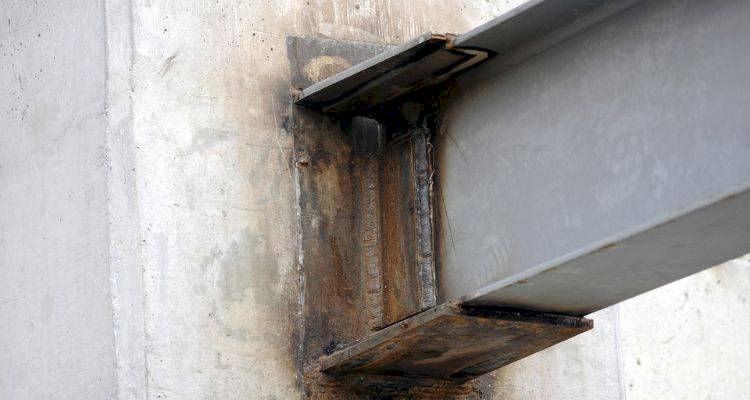
They are often referred to as "I" beams, due to their I-shaped appearance. Universal beams are most commonly used horizontally to support floors or roofs in building structures.
Pros
- ✔ Safe
- ✔ Durable
- ✔ Low-cost
- ✔ Lightweight
- ✔ Flexible
Cons
- ✖ Can rust over time
- ✖ Can weaken over time
- ✖ Conducts heat
Universal Columns
Universal columns are great for a variety of construction purposes. They are safe, durable and eco-friendly and come at a low price in comparison to other materials.
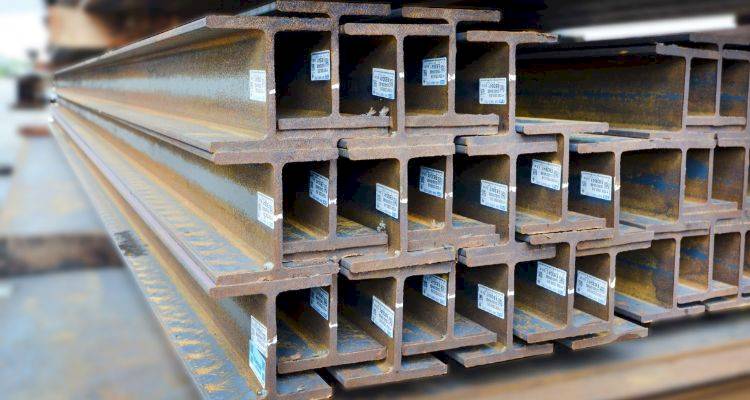
Universal columns are commonly referred to as "H" beams due to their H-shaped appearance. These columns are mainly used in structural applications.
Pros
- ✔ Safe
- ✔ Durable
- ✔ Low-cost
- ✔ Recyclable
- ✔ Lightweight
Cons
- ✖ Can weaken over time
- ✖ Conducts heat
Double Beam
A double beam is similar to a universal beam, only the beam part is doubled, which makes this beam stronger and able to withstand more weight. Double beams are used for purposes similar to universal beams to support floors and roofs.
Pros
- ✔ Safe
- ✔ Durable
- ✔ Low-cost
- ✔ Lightweight
- ✔ Flexible
- ✔ Extra Strong
Cons
- ✖ Can rust over time
- ✖ Can weaken over time
- ✖ Conducts heat
- ✖ Bulky
Channels
A channel is a C-shaped beam that comes in various sizes and thicknesses. The shape of this type of beam provides superior structural support.
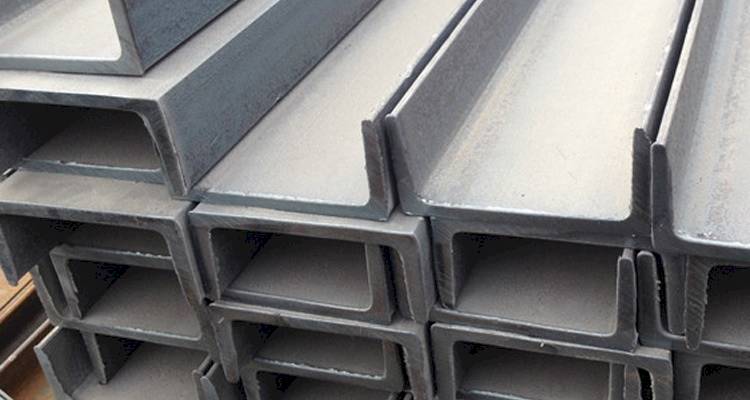
This makes it an ideal product for frames and braces on buildings and structural support applications.
Pros
- ✔ Strong
- ✔ Safe
- ✔ Durable
- ✔ Superior structural support
Cons
- ✖ Can rust over time
- ✖ Can weaken over time
- ✖ Conducts heat
T-Beam
A T-beam is most commonly constructed using reinforced concrete. Sometimes, isolated T-beams are constructed to increase the compression strength of concrete. T-beams offer an extra layer of strength for structural purposes.
Pros
- ✔ Adds extra strength
- ✔ Better head room
- ✔ Structural support
Cons
- ✖ Requires strong bonding
- ✖ Can become weak
- ✖ Can develop cracks
Lintels
Lintels are horizontal beams that are placed over doors and windows. These can be made from timber, stone, brick, steel, or reinforced concrete.
Pros
- ✔ Protects doors and windows
- ✔ Safe
Cons
- ✖ Can become cracked
- ✖ Can weaken over time
Do I Need an RSJ?
Building any structure is a complicated process as so many things need to be considered.
If you are considering removing a wall from your home, consulting with a building company or a structural engineer is important.
This professional will then inspect your home to see what you are looking to do and advise on the correct procedures needed to carry out a safe job.
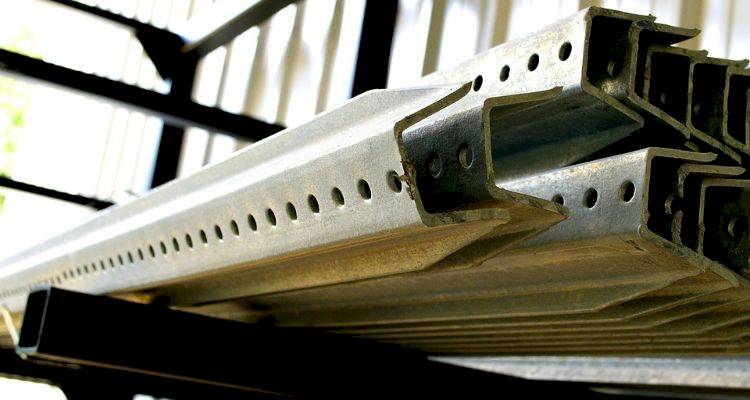
This includes support of the ceiling and roof. If you plan on removing a wall, you will most likely need to put an RSJ in its place to support the upper floor. A rolled steel joist will support the area above the wall you are taking out, similar to how the wall was when it was there.
If you are unsure if you need an RSJ for any work that you are carrying out on your home, you should consult with a building professional or a structural engineer. They will be able to advise you on the best route to take when it comes to renovating your property.
What is a Load Bearing Wall?
A load-bearing wall is an important structural element of a building. This means that it bears the weight of the elements of the wall above it, such as the roof structure, upstairs walls, and floor joists, and may also provide lateral support to tie adjoining walls together.
The wall above transfers its weight down through a load-bearing wall to the building's foundation. The orientation of load-bearing walls depends on the structural layout, such as the direction of floor joists or roof loads, rather than always running parallel to the ridge.
How Do You Identify a Load Bearing Wall?
Identifying a load-bearing wall is not always straightforward. If you are unsure, it’s a good idea to call in a structural engineer or building inspector to inspect the wall before removing or altering any internal walls.
Building Regulations When Installing an RSJ
If you are creating a new building, installing fittings or windows, or extending or structurally altering an existing building, you will need to gain building regulations approval. This is not the same as planning permission.
Depending on the type of building you are working on and the type of work that you are carrying out, you may also need to gain planning permission.
If you are the owner of the property that is having work done, you are responsible for ensuring your builder complies with building regulation rules.
All calculations for RSJ beams must be sent to a building control officer who will sign off the building regulations approval.
The building control officer will check that the calculations and provisional building work plans comply with the building regulations.
Can I Install an RSJ Myself?
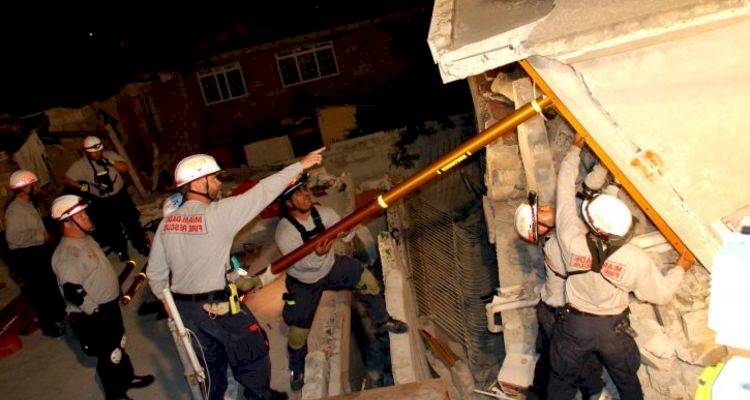
Installing an RSJ is definitely not a DIY project. It should not even be attempted without hiring a structural engineer first for the necessary calculations to determine the correct size of the steel beam required.
A structural engineer will be required for building regulations approval, and then the actual installation should be done by an experienced builder. This is because if there are any mistakes or corners cut, you could compromise the structural integrity of the property.
How risky is it to install an RSJ DIY? Is it okay to do so? Do you need special permission or approval?
The size of the steel needs to be calculated by a qualified structural engineer, then the steel needs to be installed by an experienced installer ensuring everything is propped and packed sufficiently."
There are some parts of the job that you may be able to complete yourself in order to save some money, such as removing waste or re-decorating. However, the main aspect of the job should be left up to the professionals to ensure that everything is done correctly and to ensure that the completed job is safe.
Even if you are a qualified builder with the necessary skills and experience, you must still obtain the appropriate building regulations approvals before carrying out the work. Completing the installation yourself may reduce labour costs, but compliance and safety remain essential.
Cost of RSJ Removal
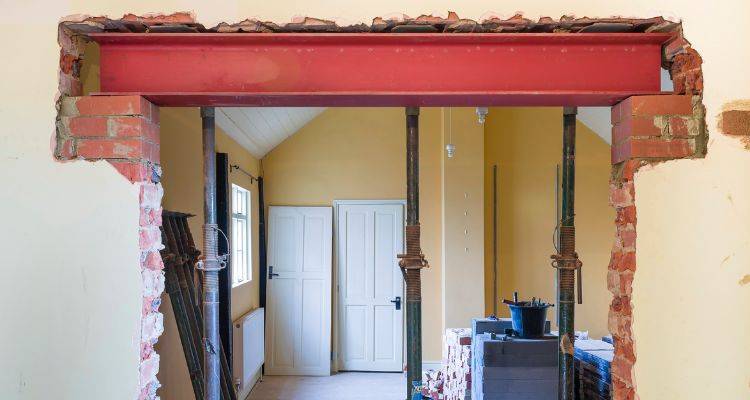
You may want to remove an RSJ if you are re-building a supporting wall, or if you are knocking down the wall above the steel beam. Another reason you may want to remove an RSJ is to replace it with another one or to replace it with a different kind of support beam.
Removing an RSJ is not an easy job and should be done safely and with great care. If you are unsure of what is required of the job when choosing to remove an RSJ, you will need to consult with a structural engineer to advise on the best method for removing your rolled steel joist.
If you are removing a rolled steel joist, you will need to consider if you need to replace it with some other kind of support. If there is still a bearing load above where the RSJ was, you will need to replace the RSJ with some other form of support, such as a wall or another support beam.
A builder will charge you around £20 to £35 per hour for the labour of removing your RSJ. There are also some other costs that may become involved in the job of removing an RSJ.
Waste removal is something that you may need to think about. A one-week skip hire will cost you around £200 to £250.
Re-decorating a small room will cost around £150 to £160 per day. Also, re-plastering a small room will cost around £390 to £510 and should take no more than a day.
Is an I beam and RSJ basically the same thing? What’s the difference?
Checklist: Hiring an RSJ Installer in the UK
Below are some points to consider before hiring an RSJ installer for your project:
- Do they have the correct measurements? Only proceed if the RSJ installer is working from measurements provided by a qualified structural engineer.
- Have building regulations been approved? Ensure either you or your builder has obtained the necessary approvals to comply with local regulations.
- Are guarantees or warranties offered? Confirm whether the installer or company provides any assurances on the quality of their work.
- Do they provide additional services? Check if they offer clean-up, waste removal, re-plastering, or re-decoration as part of the service.
- How much experience do they have? Ideally, look for a builder or company with several years of experience installing RSJs safely and correctly.
- Do they have positive reviews? Ask for references and testimonials or check feedback from previous clients via sites such as MyJobQuote to gauge their reliability and quality of work.
- Have you compared multiple quotes? Use MyJobQuote to help find local companies, compare at least three quotes to help ensure the price is reasonable for the work and check they all come with a detailed breakdown of costs and labour.



